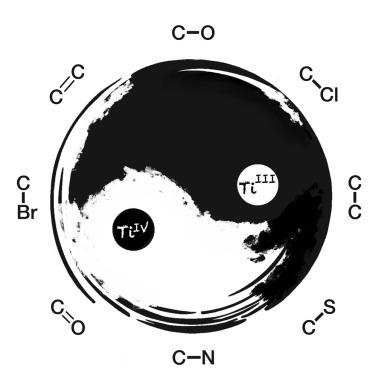Chem ( IF 23.5 ) Pub Date : 2022-07-01 , DOI: 10.1016/j.chempr.2022.06.005 Xiangyu Wu 1 , Yejin Chang 1 , Song Lin 1

|
Radical chemistry has emerged as a cornerstone in modern organic synthesis, providing chemists with numerous new tools to rapidly expand reactivity and chemical space in academic and industrial research. In this regard, titanium complexes have been recognized as an attractive class of catalysts because of their rich redox activities in addition to the abundance and low toxicity of this early transition metal. Traditionally employed for the activation of epoxides and carbonyl compounds, Ti radical redox catalysis has broken new grounds in recent years, giving rise to a diverse repertoire of useful transformations. In this perspective, we highlight recent developments in the area of TiIII/IV catalysis with respect to the activation of different types of chemical bonds. Furthermore, we discuss future opportunities in integrating Ti radical chemistry with other catalytic systems as well as with emerging new technologies, such as photochemistry and electrochemistry.
中文翻译:

钛自由基氧化还原催化:催化剂、反应和活化模式的最新创新
自由基化学已成为现代有机合成的基石,为化学家提供了大量新工具,以快速扩展学术和工业研究中的反应活性和化学空间。在这方面,钛配合物已被认为是一类有吸引力的催化剂,因为除了这种早期过渡金属的丰富性和低毒性之外,它们还具有丰富的氧化还原活性。传统上用于环氧化物和羰基化合物的活化,Ti自由基氧化还原催化近年来取得了新的突破,产生了多种有用的转化。从这个角度来看,我们重点介绍 Ti III/IV领域的最新发展催化不同类型化学键的活化。此外,我们还讨论了将钛自由基化学与其他催化系统以及光化学和电化学等新兴技术相结合的未来机会。



























 京公网安备 11010802027423号
京公网安备 11010802027423号